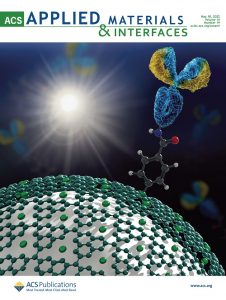
Using a set of carefully prepared and combined materials, Brazilian researchers have developed a portable photoelectrochemical immunosensor with potential for use in the early diagnosis of diseases. The device allows rapid and accurate detection of diseases such as cancer, even at an early stage. The immunosensor was tested, with very good results, in the detection of prostate-specific antigen (PSA), which is the most used marker to diagnose and monitor cases of prostate cancer from blood samples.
In a compact system, which fits in one hand, the device gathers all the elements necessary to carry out the diagnosis without needing laboratories nor specialized professionals. In this way, the device is part of the point-of-care testing paradigm, an expression that designates, in the health area, the possibility of performing medical tests at the time and place of the patient´s medical care.
“The technology we developed has the potential to facilitate cancer diagnoses and make it faster and more accurate, especially at the early stage. The method allows the detection of biomarkers at low concentration levels and in the doctor’s office”, says Thiago Serafim Martins, one of the corresponding authors of the article that reports this research and was featured on cover of ACS Applied Materials & Interfaces. Martins participated in this work during his doctorate, whose thesis was defended this year at the São Carlos Institute of Chemistry (IQSC-USP).

The challenge
Immunosensors form a class of detection devices whose operation is based on the interaction between antibodies and their antigens. In these biosensors, antibodies are immobilized on the surface of the detection platform so that, when they come into contact with their respective antigens, and only with them, a chemical reaction occurs – the one that, in the body, allows us to defend ourselves from pathogens.
At that moment, another component of the immunosensor comes into play, the transducer, which translates this immunochemical information into another type of signal that can be easily interpreted (usually an electrical current). When this translation is based on electrochemical reactions, the device is called an electrochemical immunosensor. And when the generation of electric current is encouraged by the action of light on a sensitive material, the immunosensor is said to be photoelectrochemical.
“Photoelectrochemical biosensors belong to a sensitive and low-cost analytical approach to detecting molecules of clinical and environmental interest”, says José Luiz Bott-Neto, postdoctoral fellow at the São Carlos Institute of Physics (IFSC-USP) and corresponding co-author of the paper. However, he explains, before this work, this technology required the use of large, high-power light sources, which made its use in portable devices unfeasible.
Faced with this limitation, the team from USP São Carlos set out to develop a photocatalyst (a nanomaterial capable of increasing the system’s ability to absorb light and transform it into electric current) that would allow the use of smaller light sources. The researchers started with two materials that, in addition to having photocatalyst properties, are non-toxic, inexpensive and easy to prepare: titanium dioxide (TiO2) and graphitic carbon nitride (gC3N4). Then, they inserted nickel atoms into the graphitic carbon nitride structure, forming the Ni-gC3N4 compound, and combined this material with titanium dioxide nanoparticles, resulting in the formation of the Ni-gC3N4/TiO2 composite. Finally, they treated the surface of the composite with aryl diazonium salt. “The latter acted as a signal amplifier at the same time that it made it possible to immobilize the antibodies on the nanoparticles”, says Bott-Neto. The photocatalyst was used to coat the carbon electrodes of the photoelectrochemical system.
The result
Always looking for simplicity and miniaturization, the authors assembled a prototype of the device with the photocatalysts, the anti-PSA antibodies immobilized on them, an electrical system and, as a light source, a 3-watt LED, in addition to parts produced through 3D printing. In performance tests, the photoelectrochemical immunosensor was able to detect PSA at different concentrations in human serum samples, and presented the lowest detection limit ever reported in the literature for devices of this type, according to the authors of the article. “The high sensitivity and selectivity of the immunosensor can be attributed to the heterojunction between Ni-gC3N4 and TiO2”, explains Bott-Neto.
The work makes a fundamental contribution to taking photoelectrochemical detection technology, which is characterized by low cost and high levels of sensitivity and selectivity, to applications that require portability, such as point-of-care tests.

Paper reference: Photocatalysis of TiO2 Sensitized with Graphitic Carbon Nitride and Electrodeposited Aryl Diazonium on Screen-Printed Electrodes to Detect Prostate Specific Antigen under Visible Light. José L Bott-Neto, Thiago S Martins, Lorenzo A Buscaglia, Sergio A S Machado, and Osvaldo N Oliveira Jr. ACS Applied Materials & Interfaces 2022, 14, 19, 22114–22121. https://doi.org/10.1021/acsami.2c03106
Corresponding author contact: joseluiz.bott@gmail.com

Carlos Alberto Fonzar Pintao
Parabéns a todos da equipe. Um trabalho muito importante para monitorar o estado de saúde das pessoas. Novo leque de pesquisa aberto para a ciência e por brasileiros. Muito orgulho de ser brasileiro.